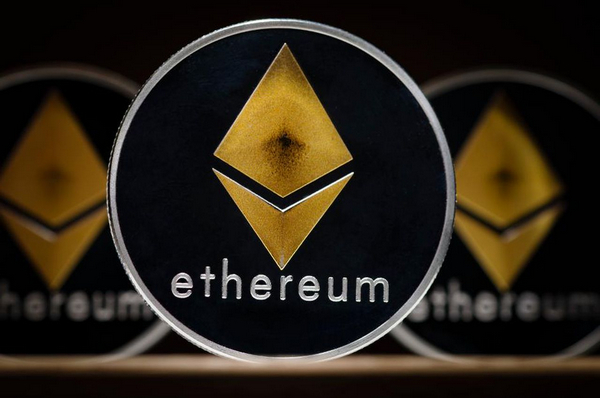-
 Bitcoin
Bitcoin $106,437.2012
0.82% -
 Ethereum
Ethereum $2,442.5287
0.82% -
 Tether USDt
Tether USDt $1.0005
-0.02% -
 XRP
XRP $2.1812
-0.27% -
 BNB
BNB $645.1327
0.45% -
 Solana
Solana $146.2379
0.39% -
 USDC
USDC $0.9999
-0.01% -
 TRON
TRON $0.2751
0.92% -
 Dogecoin
Dogecoin $0.1662
-0.23% -
 Cardano
Cardano $0.5827
-1.22% -
 Hyperliquid
Hyperliquid $37.5225
0.04% -
 Bitcoin Cash
Bitcoin Cash $479.0877
4.02% -
 Sui
Sui $2.7846
-3.27% -
 Chainlink
Chainlink $13.3576
0.84% -
 UNUS SED LEO
UNUS SED LEO $9.0252
-1.20% -
 Stellar
Stellar $0.2455
-1.07% -
 Avalanche
Avalanche $18.0680
-1.81% -
 Toncoin
Toncoin $2.8948
-1.07% -
 Shiba Inu
Shiba Inu $0.0...01164
-1.65% -
 Litecoin
Litecoin $85.0637
-0.06% -
 Hedera
Hedera $0.1526
-0.89% -
 Monero
Monero $316.2941
0.78% -
 Ethena USDe
Ethena USDe $1.0003
-0.04% -
 Polkadot
Polkadot $3.4113
-1.87% -
 Dai
Dai $1.0000
-0.01% -
 Bitget Token
Bitget Token $4.4488
5.16% -
 Uniswap
Uniswap $7.1740
3.09% -
 Pi
Pi $0.5968
11.43% -
 Pepe
Pepe $0.0...01010
-0.65% -
 Aave
Aave $264.3189
0.40%
who are ethereum competitors
Ethereum's prominent rivals, including Binance Smart Chain, Solana, Polygon, Cardano, Polkadot, and Avalanche, offer unique features and advantages, challenging Ethereum's dominance in the blockchain ecosystem.
Oct 15, 2024 at 05:42 pm

Ethereum's Top Competitors
Ethereum, a blockchain platform that enables the development of decentralized applications (dApps), has emerged as a leading force in the cryptocurrency and blockchain space. However, it faces stiff competition from several rivals that offer similar or unique features.
1. Binance Smart Chain (BSC)
- Launched in September 2020, BSC is a high-speed blockchain owned by the Binance cryptocurrency exchange.
- It boasts low transaction fees and compatibility with Ethereum Virtual Machine (EVM), enabling easy deployment of smart contracts developed for Ethereum.
- BSC has attracted numerous DeFi, NFT, and gaming projects.
2. Solana
- Founded in March 2020, Solana is a proof-of-history blockchain platform.
- It utilizes a unique consensus mechanism that enables faster and more scalable transaction processing.
- Solana is particularly suited for applications requiring high throughput, such as decentralized finance (DeFi) and gaming.
3. Polygon (MATIC)
- Previously known as the Matic Network, Polygon was launched in 2017.
- It operates as a layer-2 solution for Ethereum, providing increased scalability and reduced transaction fees.
- Polygon is popular for its interoperability, connecting various blockchain networks through its sidechains.
4. Cardano
- Founded in 2015, Cardano is a proof-of-stake blockchain platform.
- Its focus on academic research and scientific methodology aims to ensure a secure and scalable platform.
- Cardano is known for its smart contract programming language, Plutus, and its roadmap for further development.
5. Polkadot
- Launched in May 2020, Polkadot is a multichain platform that enables interoperability between different blockchains.
- It consists of a central relay chain that connects specialized parachains, each tailored for specific applications.
- Polkadot offers a unique governance model that allows token holders to participate in decision-making.
6. Avalanche
- Founded in 2020, Avalanche is a consensus protocol that utilizes a directed acyclic graph (DAG) structure.
- Its architecture provides high scalability and low latency, making it suitable for DeFi applications and complex smart contracts.
- Avalanche features multiple subnets that can operate independently, allowing for customized blockchain solutions.
Conclusion
While Ethereum remains a dominant player in the blockchain ecosystem, its competitors offer unique advantages that cater to specific needs. These rivals have made significant strides in areas such as scalability, transaction fees, and technical innovation. As the blockchain industry continues to evolve, it will be interesting to see how these competitors challenge Ethereum's position and shape the future of decentralized technologies.
Disclaimer:info@kdj.com
The information provided is not trading advice. kdj.com does not assume any responsibility for any investments made based on the information provided in this article. Cryptocurrencies are highly volatile and it is highly recommended that you invest with caution after thorough research!
If you believe that the content used on this website infringes your copyright, please contact us immediately (info@kdj.com) and we will delete it promptly.
- DEX Race Heats Up: Paradigm's Bet on GTE and the Startup Investment Landscape
- 2025-06-25 14:55:12
- Pepe Coin's Wild Ride: Liquidation Zones, Trump's Crypto Crash, and the Allure of APY
- 2025-06-25 14:55:12
- Passive Income, Cryptos, and ROI: Troller Cat Leads the Meme Coin Revolution in 2025
- 2025-06-25 15:00:12
- Cryptos, Buy Now, Beta Version: Riding the Meme Coin Wave with Troller Cat and Beyond
- 2025-06-25 15:00:12
- Athena Bitcoin & Crypto ATMs: Scam Crackdown & Resale Shares?
- 2025-06-25 15:05:12
- Microsoft, Xbox, Layoffs: Navigating the Shifting Landscape
- 2025-06-25 15:05:12
Related knowledge

How to customize USDT TRC20 mining fees? Flexible adjustment tutorial
Jun 13,2025 at 01:42am
Understanding USDT TRC20 Mining FeesMining fees on the TRON (TRC20) network are essential for processing transactions. Unlike Bitcoin or Ethereum, where miners directly validate transactions, TRON uses a delegated proof-of-stake (DPoS) mechanism. However, users still need to pay bandwidth and energy fees, which are collectively referred to as 'mining fe...

USDT TRC20 transaction is stuck? Solution summary
Jun 14,2025 at 11:15pm
Understanding USDT TRC20 TransactionsWhen users mention that a USDT TRC20 transaction is stuck, they typically refer to a situation where the transfer of Tether (USDT) on the TRON blockchain has not been confirmed for an extended period. This issue may arise due to various reasons such as network congestion, insufficient transaction fees, or wallet-rela...

How to cancel USDT TRC20 unconfirmed transactions? Operation guide
Jun 13,2025 at 11:01pm
Understanding USDT TRC20 Unconfirmed TransactionsWhen dealing with USDT TRC20 transactions, it’s crucial to understand what an unconfirmed transaction means. An unconfirmed transaction is one that has been broadcasted to the blockchain network but hasn’t yet been included in a block. This typically occurs due to low transaction fees or network congestio...

How to check USDT TRC20 balance? Introduction to multiple query methods
Jun 21,2025 at 02:42am
Understanding USDT TRC20 and Its ImportanceUSDT (Tether) is one of the most widely used stablecoins in the cryptocurrency market. It exists on multiple blockchain networks, including TRC20, which operates on the Tron (TRX) network. Checking your USDT TRC20 balance accurately is crucial for users who hold or transact with this asset. Whether you're sendi...

What to do if USDT TRC20 transfers are congested? Speed up trading skills
Jun 13,2025 at 09:56am
Understanding USDT TRC20 Transfer CongestionWhen transferring USDT TRC20, users may occasionally experience delays or congestion. This typically occurs due to network overload on the TRON blockchain, which hosts the TRC20 version of Tether. Unlike the ERC20 variant (which runs on Ethereum), TRC20 transactions are generally faster and cheaper, but during...

The relationship between USDT TRC20 and TRON chain: technical background analysis
Jun 12,2025 at 01:28pm
What is USDT TRC20?USDT TRC20 refers to the Tether (USDT) token issued on the TRON blockchain using the TRC-20 standard. Unlike the more commonly known ERC-20 version of USDT (which runs on Ethereum), the TRC-20 variant leverages the TRON network's infrastructure for faster and cheaper transactions. The emergence of this version came as part of Tether’s...

How to customize USDT TRC20 mining fees? Flexible adjustment tutorial
Jun 13,2025 at 01:42am
Understanding USDT TRC20 Mining FeesMining fees on the TRON (TRC20) network are essential for processing transactions. Unlike Bitcoin or Ethereum, where miners directly validate transactions, TRON uses a delegated proof-of-stake (DPoS) mechanism. However, users still need to pay bandwidth and energy fees, which are collectively referred to as 'mining fe...

USDT TRC20 transaction is stuck? Solution summary
Jun 14,2025 at 11:15pm
Understanding USDT TRC20 TransactionsWhen users mention that a USDT TRC20 transaction is stuck, they typically refer to a situation where the transfer of Tether (USDT) on the TRON blockchain has not been confirmed for an extended period. This issue may arise due to various reasons such as network congestion, insufficient transaction fees, or wallet-rela...

How to cancel USDT TRC20 unconfirmed transactions? Operation guide
Jun 13,2025 at 11:01pm
Understanding USDT TRC20 Unconfirmed TransactionsWhen dealing with USDT TRC20 transactions, it’s crucial to understand what an unconfirmed transaction means. An unconfirmed transaction is one that has been broadcasted to the blockchain network but hasn’t yet been included in a block. This typically occurs due to low transaction fees or network congestio...

How to check USDT TRC20 balance? Introduction to multiple query methods
Jun 21,2025 at 02:42am
Understanding USDT TRC20 and Its ImportanceUSDT (Tether) is one of the most widely used stablecoins in the cryptocurrency market. It exists on multiple blockchain networks, including TRC20, which operates on the Tron (TRX) network. Checking your USDT TRC20 balance accurately is crucial for users who hold or transact with this asset. Whether you're sendi...

What to do if USDT TRC20 transfers are congested? Speed up trading skills
Jun 13,2025 at 09:56am
Understanding USDT TRC20 Transfer CongestionWhen transferring USDT TRC20, users may occasionally experience delays or congestion. This typically occurs due to network overload on the TRON blockchain, which hosts the TRC20 version of Tether. Unlike the ERC20 variant (which runs on Ethereum), TRC20 transactions are generally faster and cheaper, but during...

The relationship between USDT TRC20 and TRON chain: technical background analysis
Jun 12,2025 at 01:28pm
What is USDT TRC20?USDT TRC20 refers to the Tether (USDT) token issued on the TRON blockchain using the TRC-20 standard. Unlike the more commonly known ERC-20 version of USDT (which runs on Ethereum), the TRC-20 variant leverages the TRON network's infrastructure for faster and cheaper transactions. The emergence of this version came as part of Tether’s...
See all articles























































































